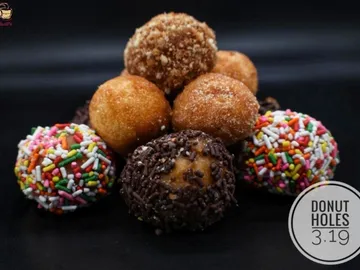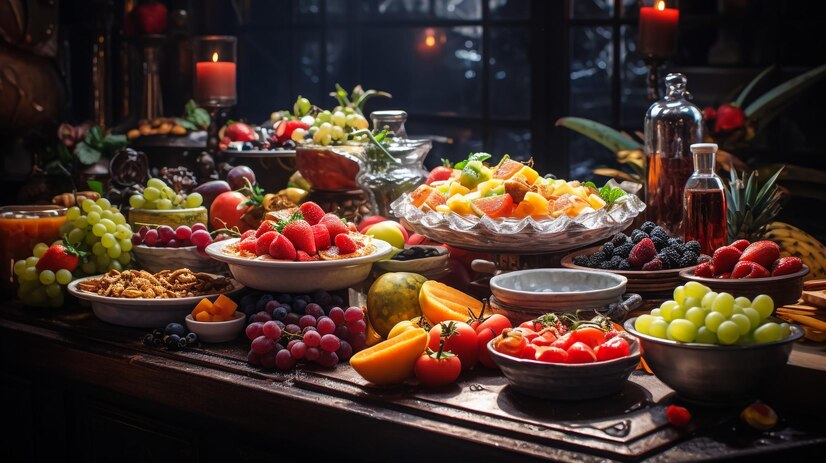Creating donut holes that are light, fluffy, and irresistibly delicious is both an art and a science. While they may appear simple, these bite-sized treats require precise techniques and attention to detail to achieve bakery-quality results. Whether you are preparing them at home or simply looking to understand what makes a perfect batch, this guide will provide expert insights to help you elevate your donut hole experience. Drawing from years of baking expertise, we will cover preparation methods, ingredient choices, frying techniques, and finishing touches that make all the difference.
At Winchell’s Donut House, donut holes are more than just a menu item—they are a signature treat perfected through time, skill, and dedication to quality. The techniques we apply can easily be adapted to your own kitchen, ensuring every bite is worth savoring.
Understanding The Essence of Donut Holes
Donut holes originated as the leftover dough from the center of ring-shaped donuts, but over time, they have become a treat in their own right. Their appeal lies in their simplicity—soft, pillowy dough with a golden exterior, often enhanced with glazes, powdered sugar, or creative fillings.
Perfecting donut holes starts with understanding the science behind the dough. The right balance of flour, yeast, sugar, and fat determines texture and flavor. Too much flour can make them dense, while an excess of yeast may result in an unpleasant aftertaste. At Winchell’s Donut House, we rely on carefully tested ratios to ensure consistency in every batch.
Choosing The Right Ingredients
High-quality ingredients are the foundation of exceptional donut holes. Use unbleached all-purpose flour for a balanced texture, and opt for fresh yeast to achieve optimal rise. Milk adds richness, while eggs contribute structure and moisture. Sugar enhances flavor and promotes browning, while a touch of salt balances sweetness.
For those aiming for a richer bite, consider incorporating a small amount of butter into the dough. This enhances tenderness and adds depth to the flavor profile. At Winchell’s Donut House, we also ensure that all dairy products are fresh and at the correct temperature before mixing—cold ingredients can slow fermentation and affect texture.
Mastering The Dough Preparation
One of the most common mistakes in making donut holes is overmixing or undermixing the dough. Overmixing can develop too much gluten, leading to a tough texture, while undermixing results in uneven crumb structure.
The dough should be kneaded until it becomes smooth and elastic, which usually takes about 8–10 minutes by hand or 5–7 minutes in a stand mixer. After kneading, allow it to rise until it doubles in size. This resting period is critical, as it allows yeast to produce carbon dioxide, creating lightness in the final product.
Frying Techniques For Perfect Results
The frying stage is where many home bakers struggle. Oil temperature is key—too hot, and the donut holes will brown too quickly on the outside while remaining raw inside; too cool, and they will absorb excess oil, becoming greasy.
Maintain the oil temperature between 350°F and 365°F (175°C–185°C). Fry in small batches to keep the temperature stable, and turn each donut hole midway through cooking to ensure even browning. Typically, each batch takes about 2–3 minutes to cook completely.
At Winchell’s Donut House, we use high-quality frying oil that is filtered regularly to maintain a clean flavor. The result is a crisp exterior and a soft, fluffy center every time.
Creative Glazes and Fillings
While classic sugar-coated donut holes will always have their place, experimenting with glazes and fillings can transform them into something extraordinary. Consider options like vanilla bean glaze, chocolate ganache, or citrus-infused icing. Fillings such as custard, raspberry jam, or hazelnut spread add a surprise element that delights customers.
A pro tip: Always let donut holes cool slightly before glazing to prevent the coating from melting off. At Winchell’s Donut House, we apply glazes at just the right temperature to ensure a glossy, even finish.
Storing Donut Holes For Freshness
Freshness is a major factor in the enjoyment of donut holes. Ideally, they should be eaten the same day they are made. However, if you need to store them, place them in an airtight container at room temperature for up to 24 hours. For longer storage, freeze them in a sealed bag, then reheat in an oven at 300°F (150°C) for a few minutes.
Avoid refrigerating them, as this can cause the texture to become dry and dense. This is one of the small yet significant practices that helps maintain quality in professional bakeries.
Common Mistakes and How To Avoid Them
Even experienced bakers occasionally encounter issues. Common problems include:
- Dense texture – Often caused by too much flour or insufficient proofing time.
- Greasy donut holes – Usually the result of frying at too low a temperature.
- Uneven cooking – Caused by overcrowding the fryer or inconsistent oil heat.
By carefully monitoring dough preparation and frying conditions, these problems can be avoided. Professional bakers, including those at Winchell’s Donut House, consistently test and refine their methods to maintain excellence.
Why Quality Control Matters
For bakeries and home cooks alike, consistency is key. Every batch should deliver the same high standard of taste and texture. This involves maintaining precise measurements, using the freshest ingredients, and following proven cooking techniques.
At Winchell’s Donut House, quality control is part of our culture. From measuring ingredients to the final presentation, every step is taken with care to ensure our customers enjoy the perfect donut hole every time.
Conclusion
Perfecting donut holes is a combination of technical skill, high-quality ingredients, and attention to detail. From mixing and proofing the dough to controlling oil temperature and experimenting with flavors, every step plays a role in achieving a professional-level result. Whether you are baking at home for family and friends or running a busy bakery, these tips will help you create donut holes that are consistently soft, flavorful, and visually appealing.
At Winchell’s Donut House, we have spent years refining our process to deliver the best possible version of this beloved treat. By applying these techniques, you can bring a little of that perfection into your own kitchen.
Frequently Asked Questions
Can I bake donut holes instead of frying them?
Yes. While frying delivers the traditional texture and flavor, baking at 375°F (190°C) for about 10–12 minutes can produce a lighter, less oily version.
How can I make my donut holes fluffier?
Ensure your yeast is fresh, allow the dough to rise fully, and avoid adding too much flour during kneading.
What is the best oil for frying donut holes?
Neutral oils with a high smoke point, such as canola or vegetable oil, work best for maintaining flavor and texture.
How do I keep glaze from becoming soggy?
Allow donut holes to cool slightly before glazing and store them in a dry, airtight container.
Can I prepare the dough in advance?
Yes. You can refrigerate the dough after the first rise for up to 24 hours, then shape and fry when ready.




